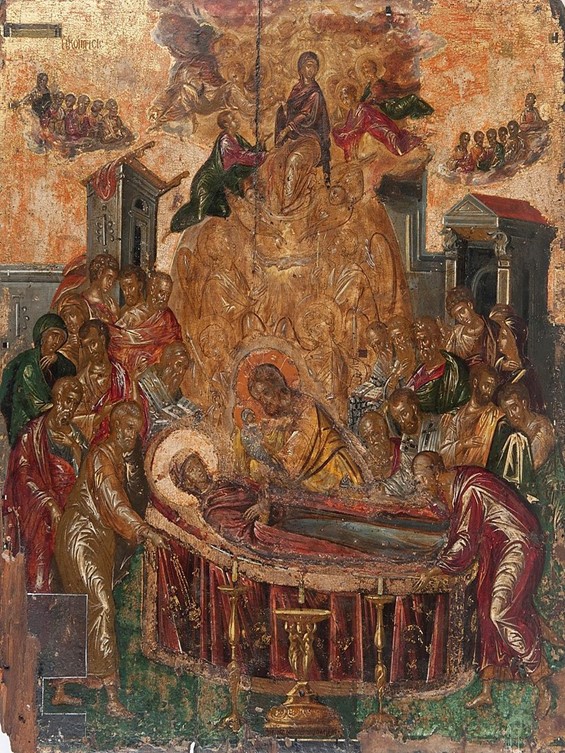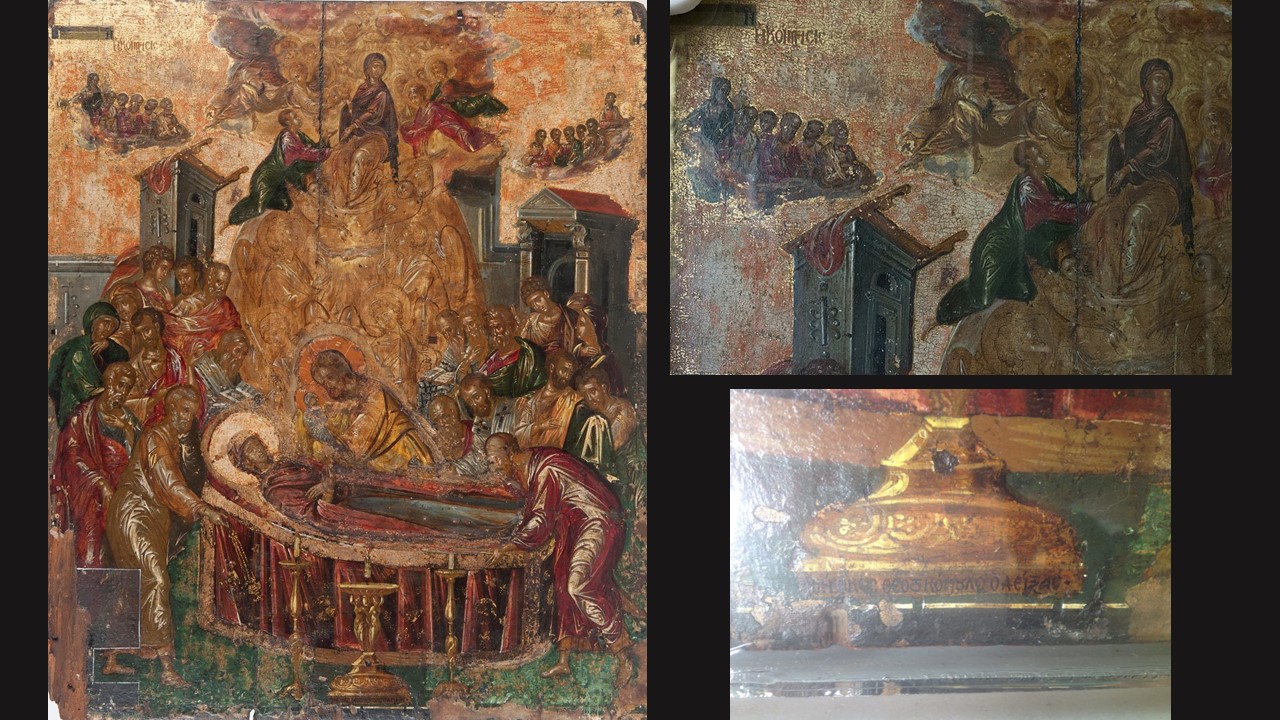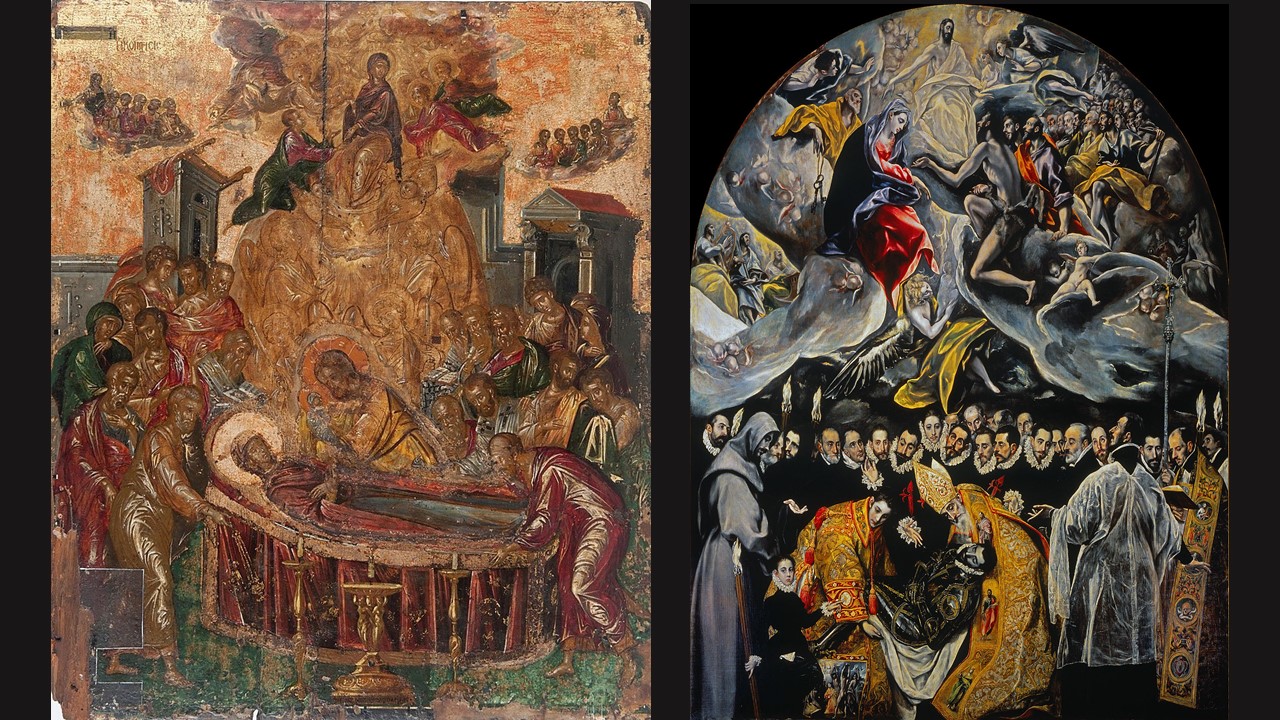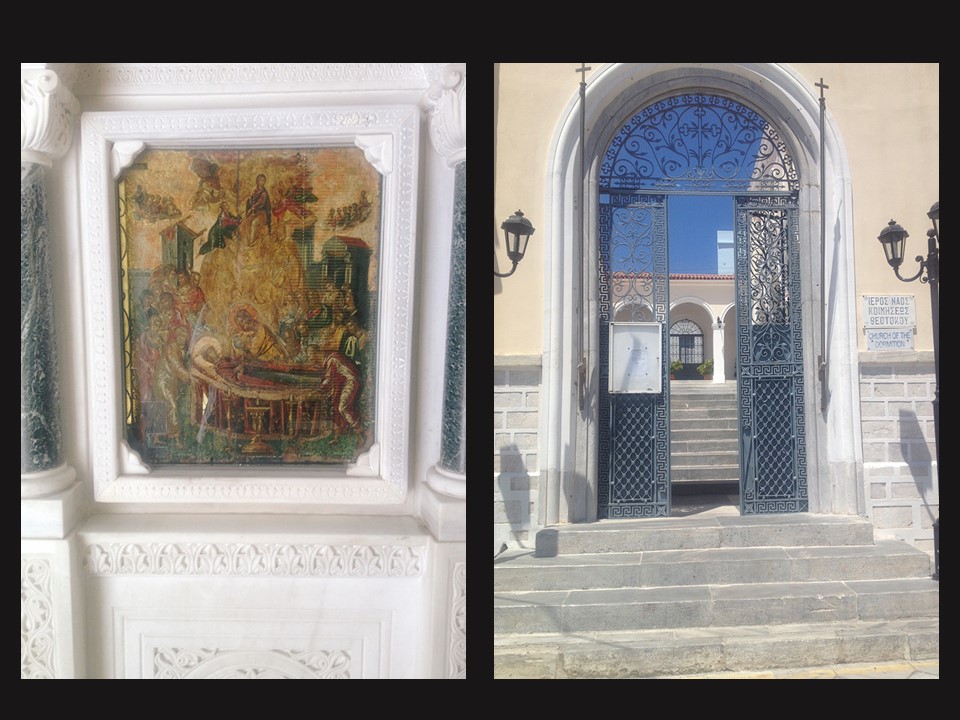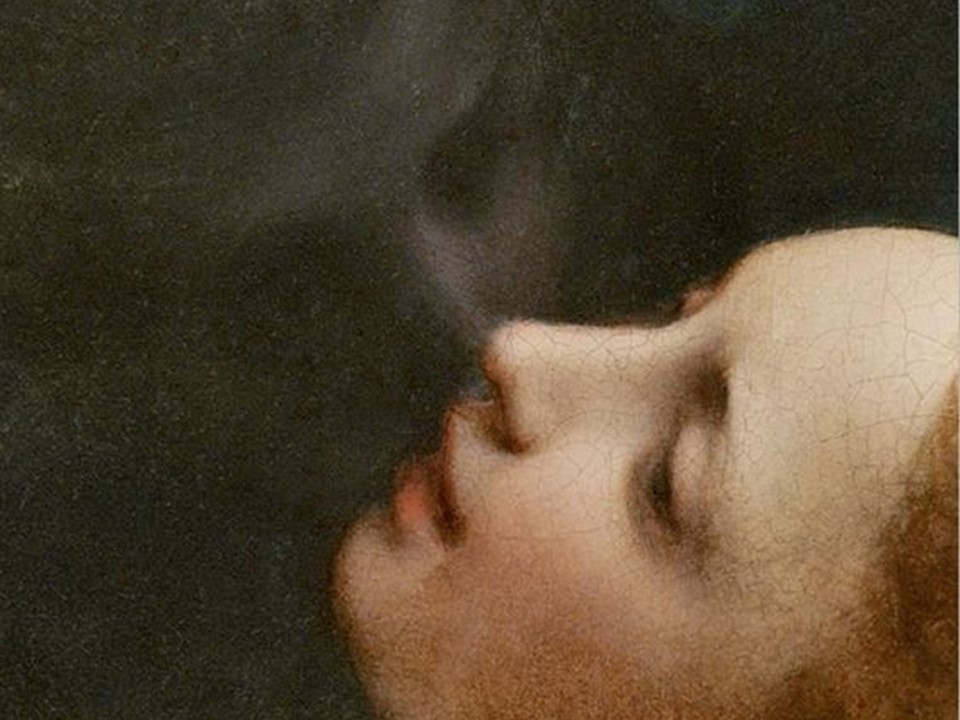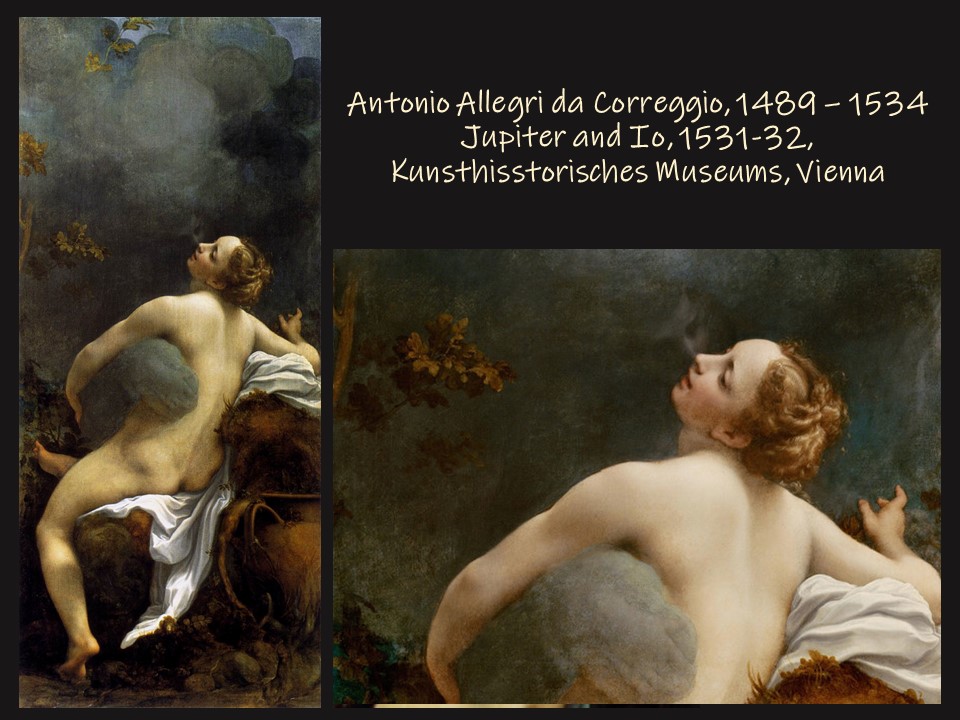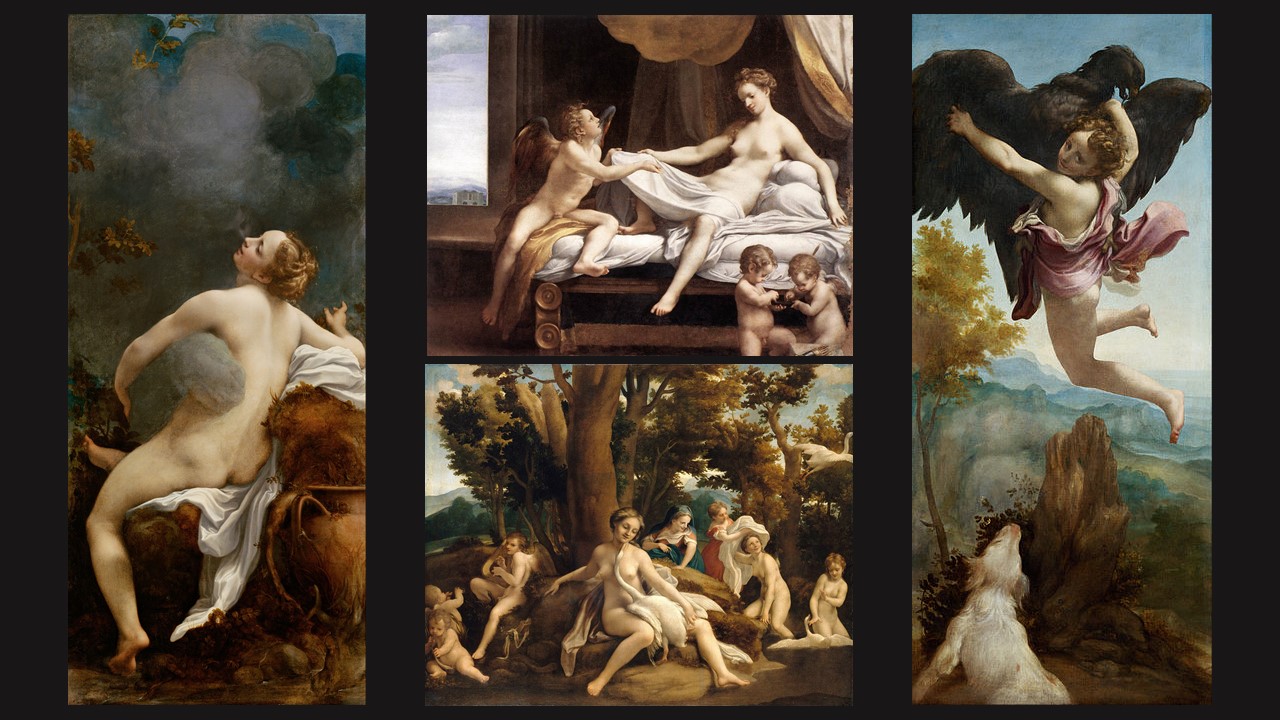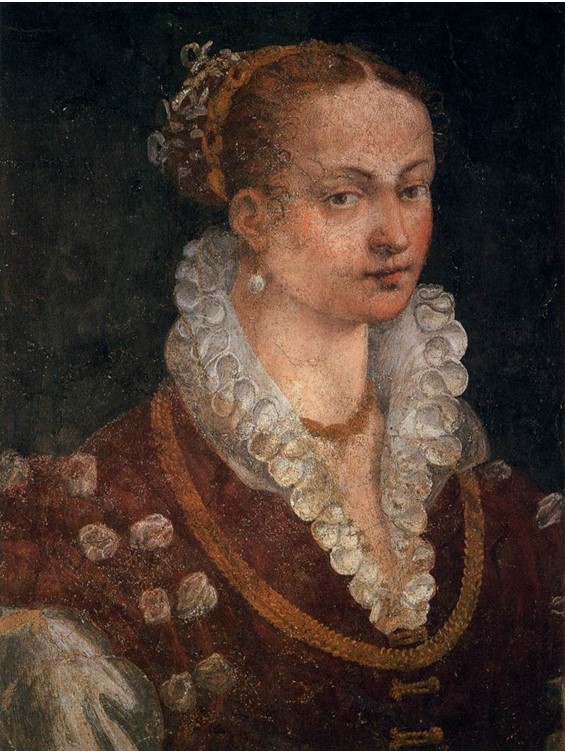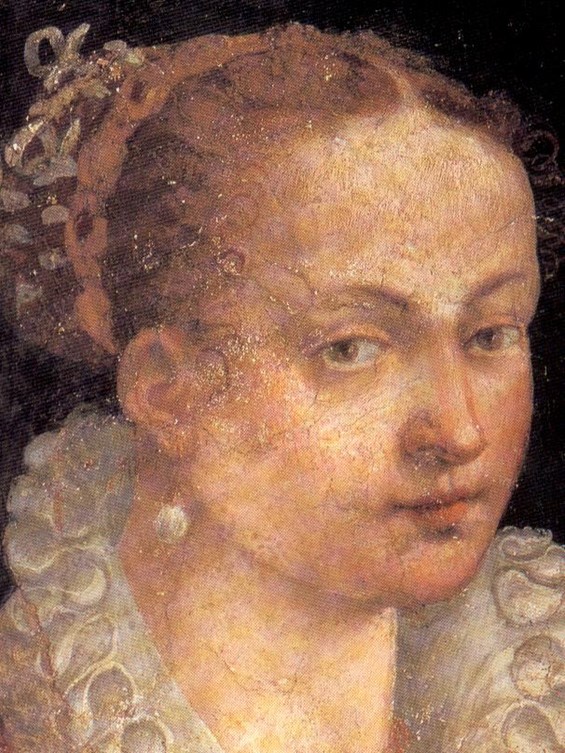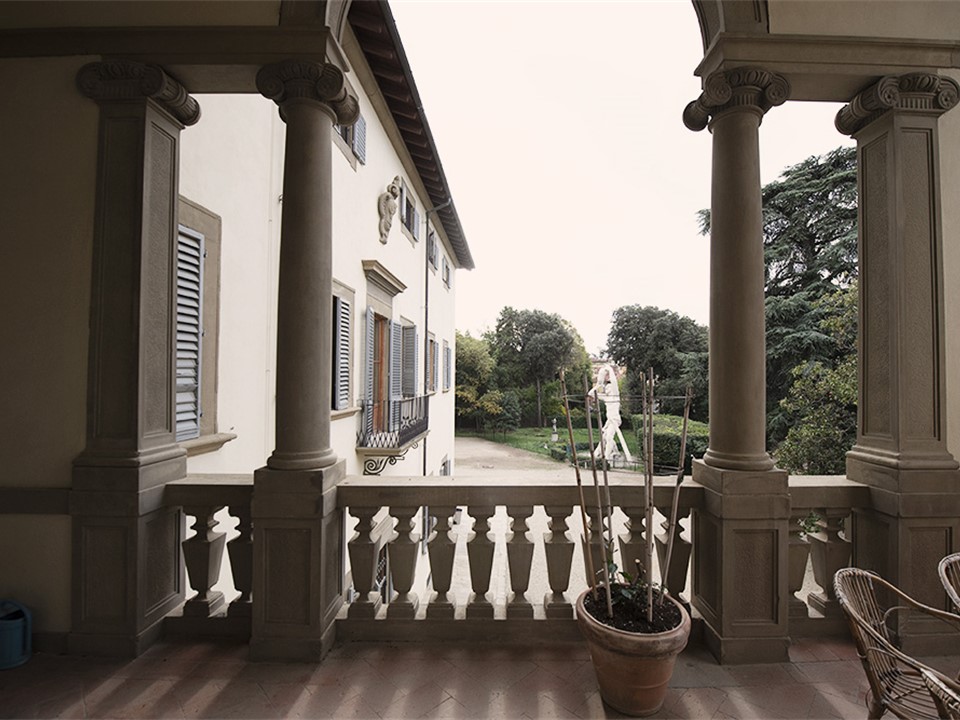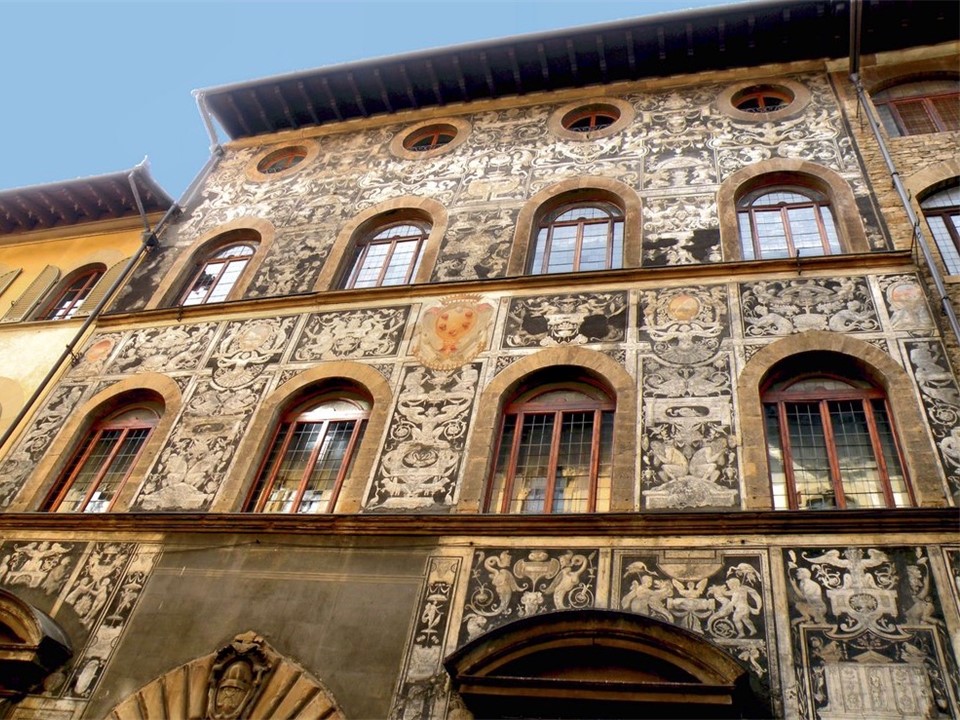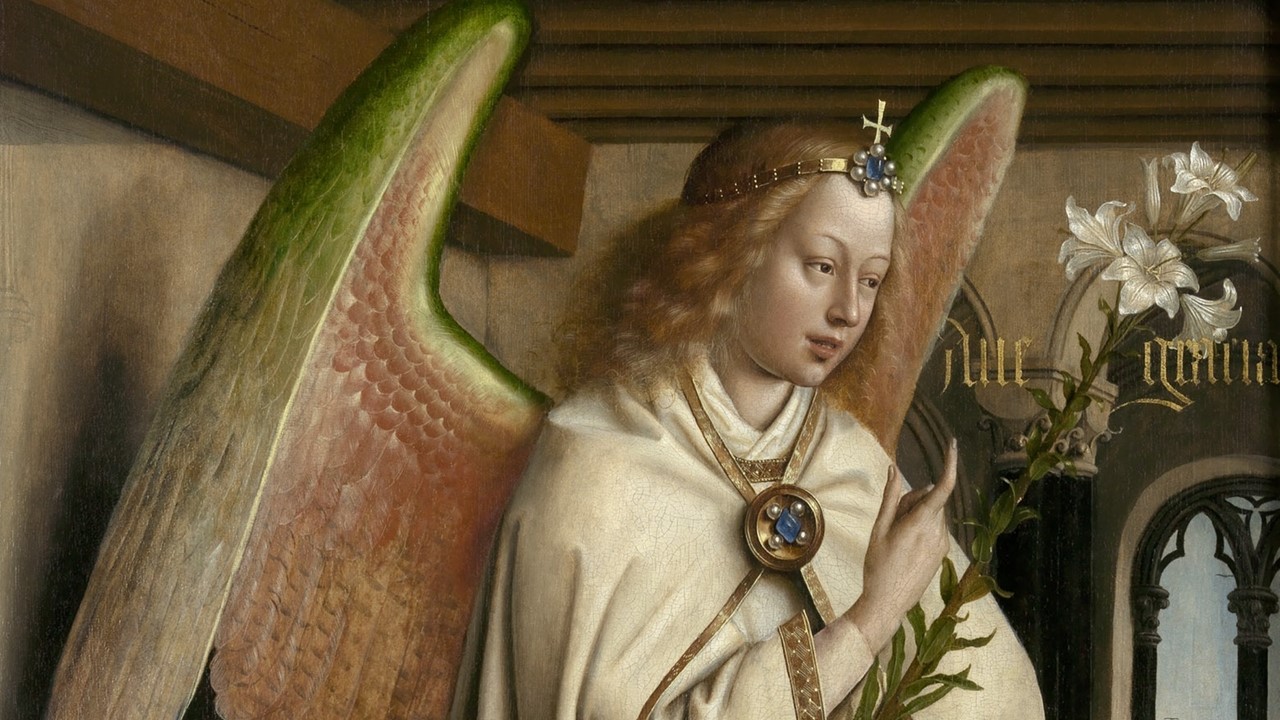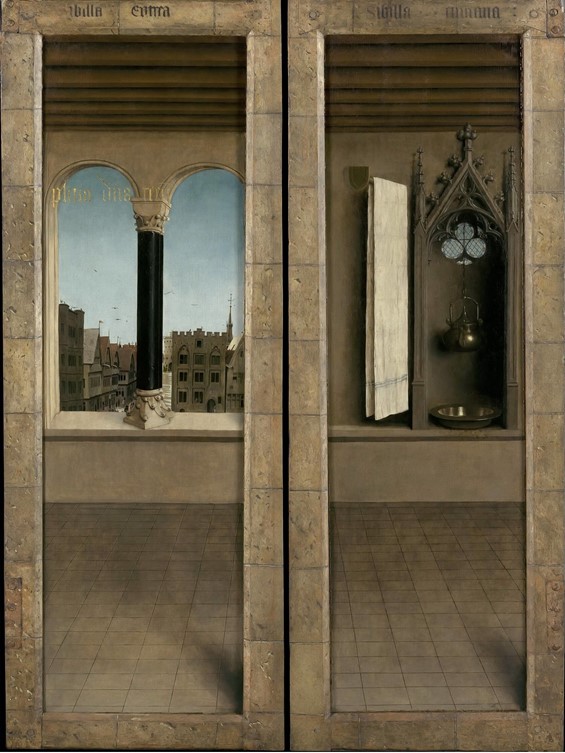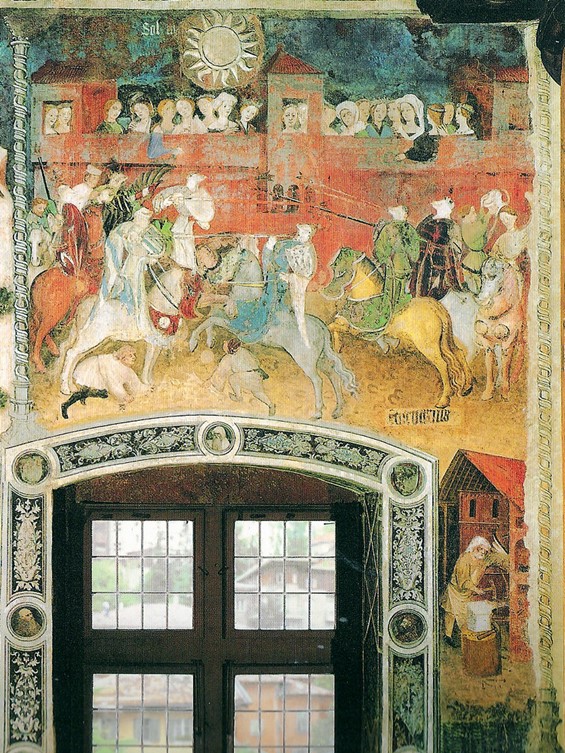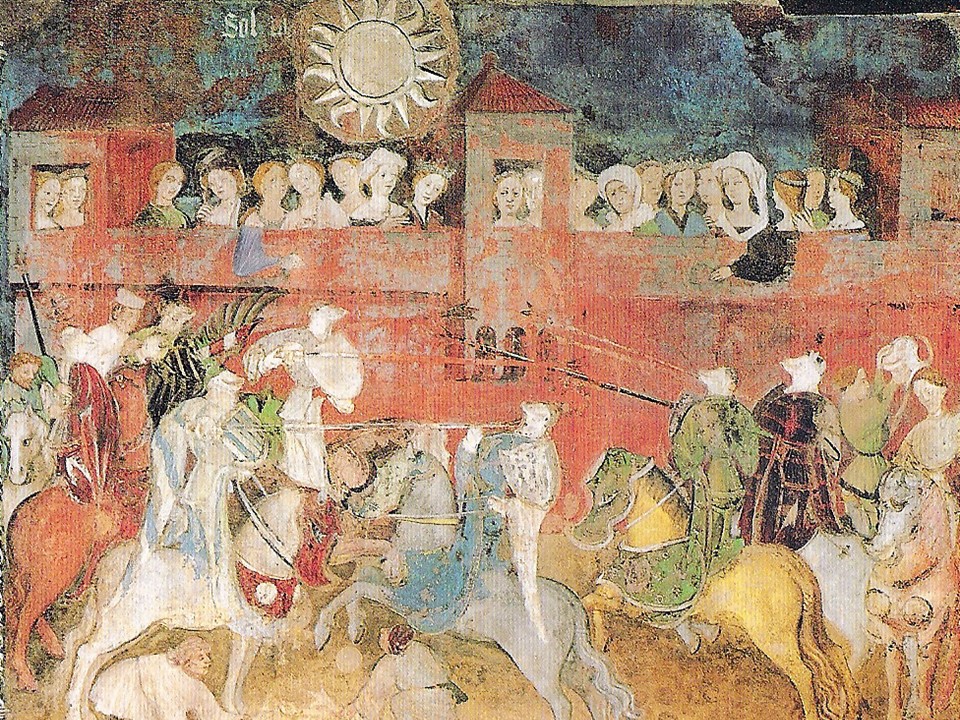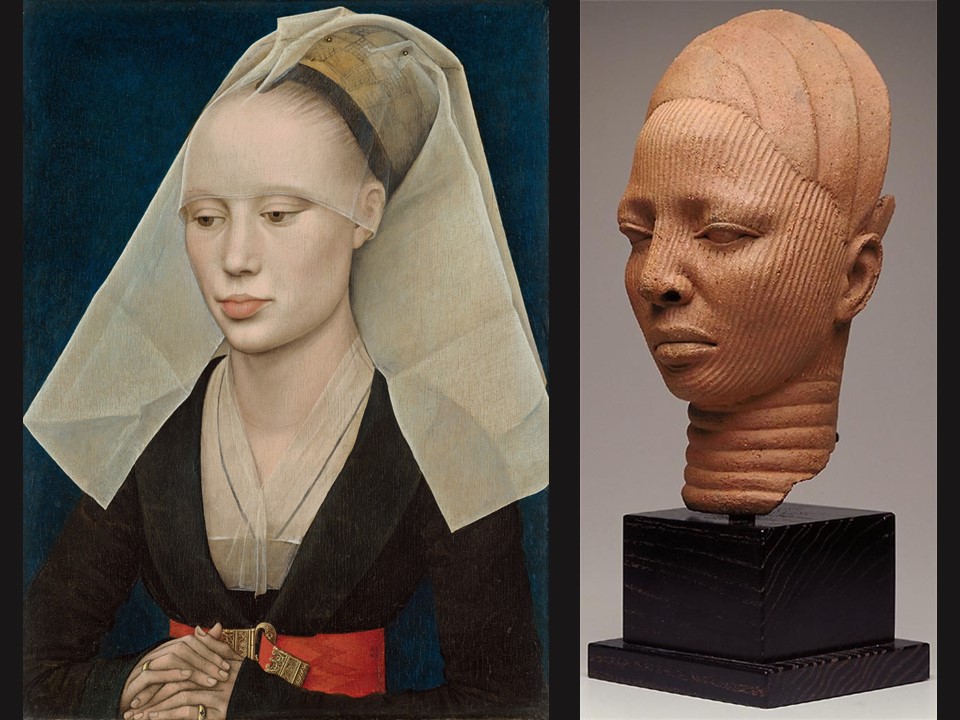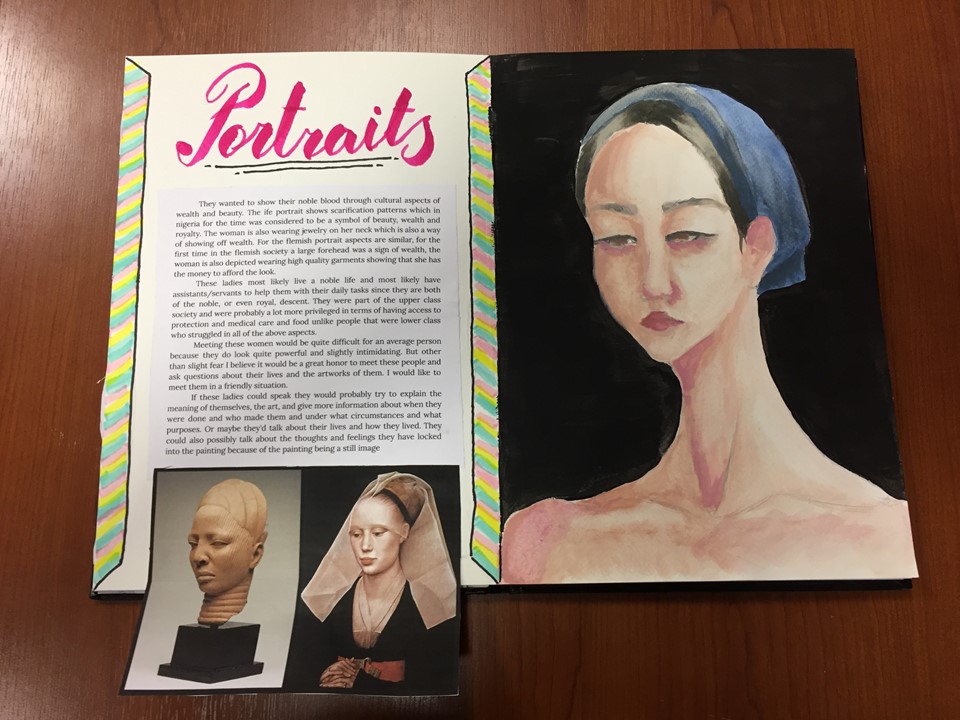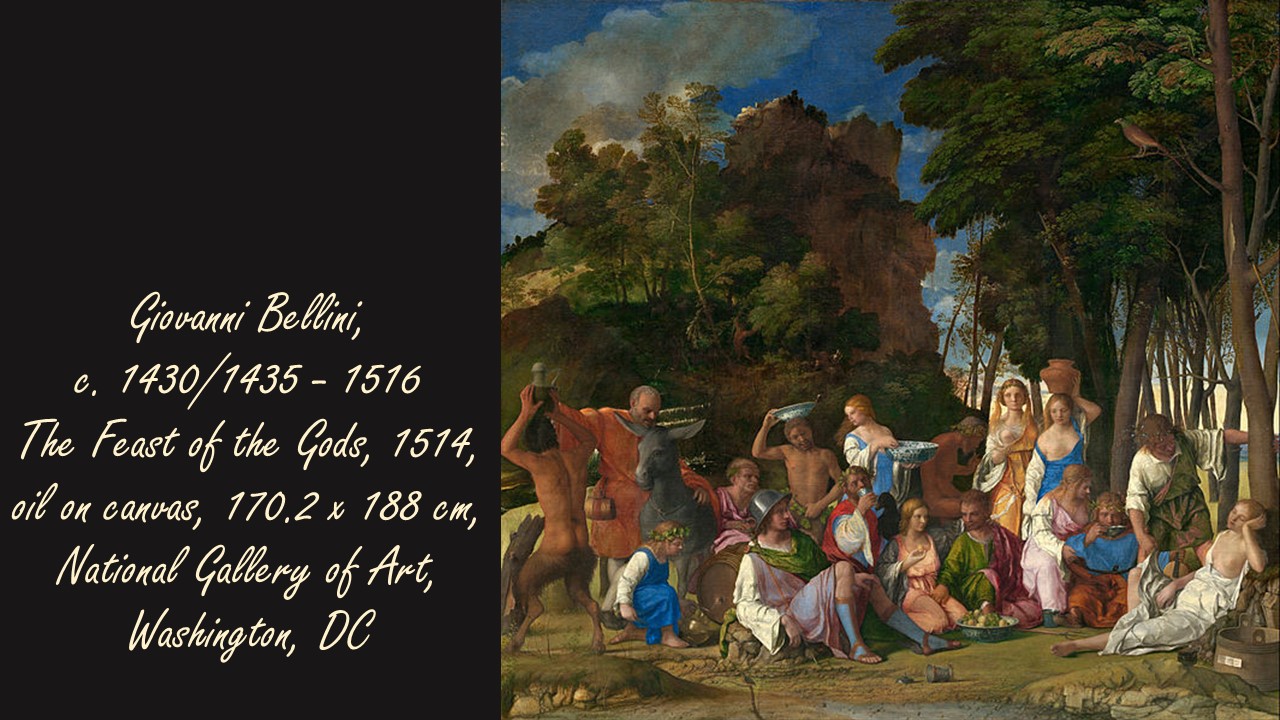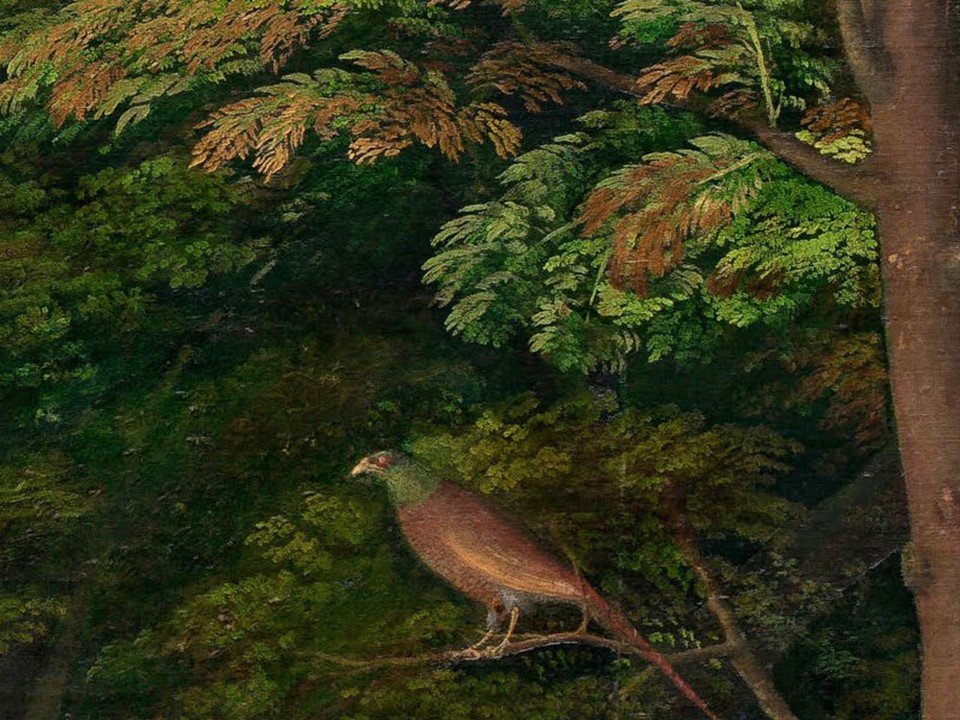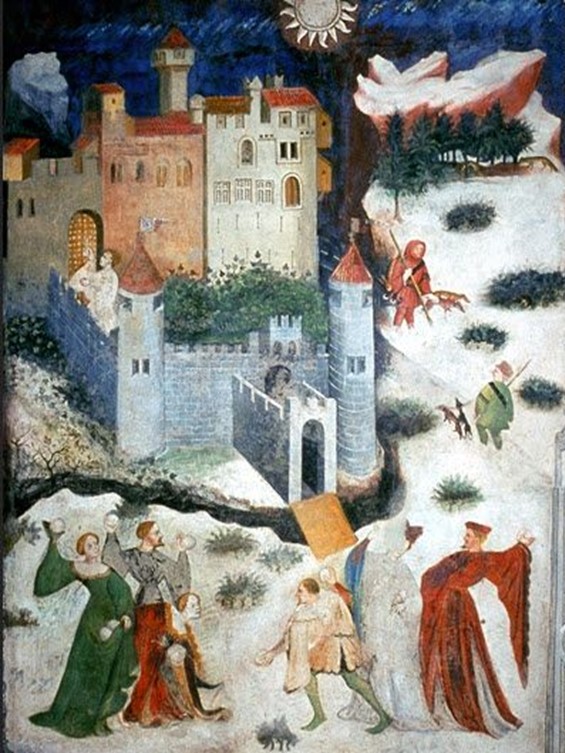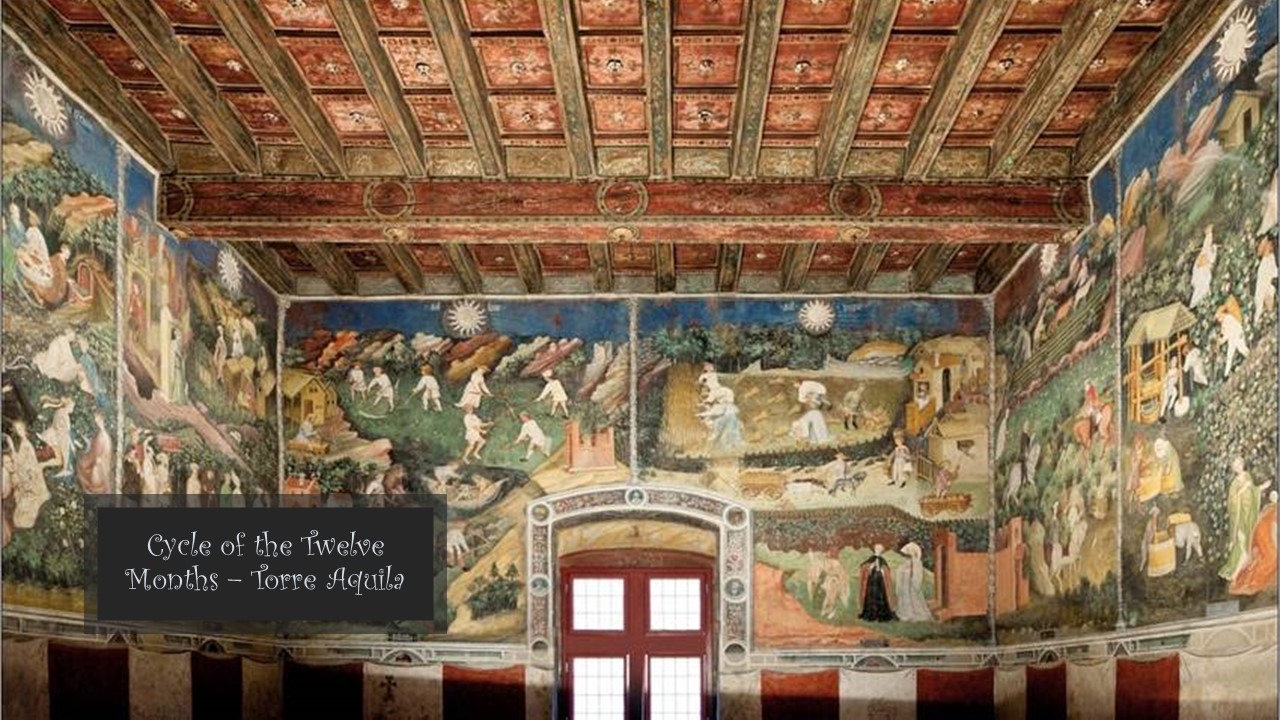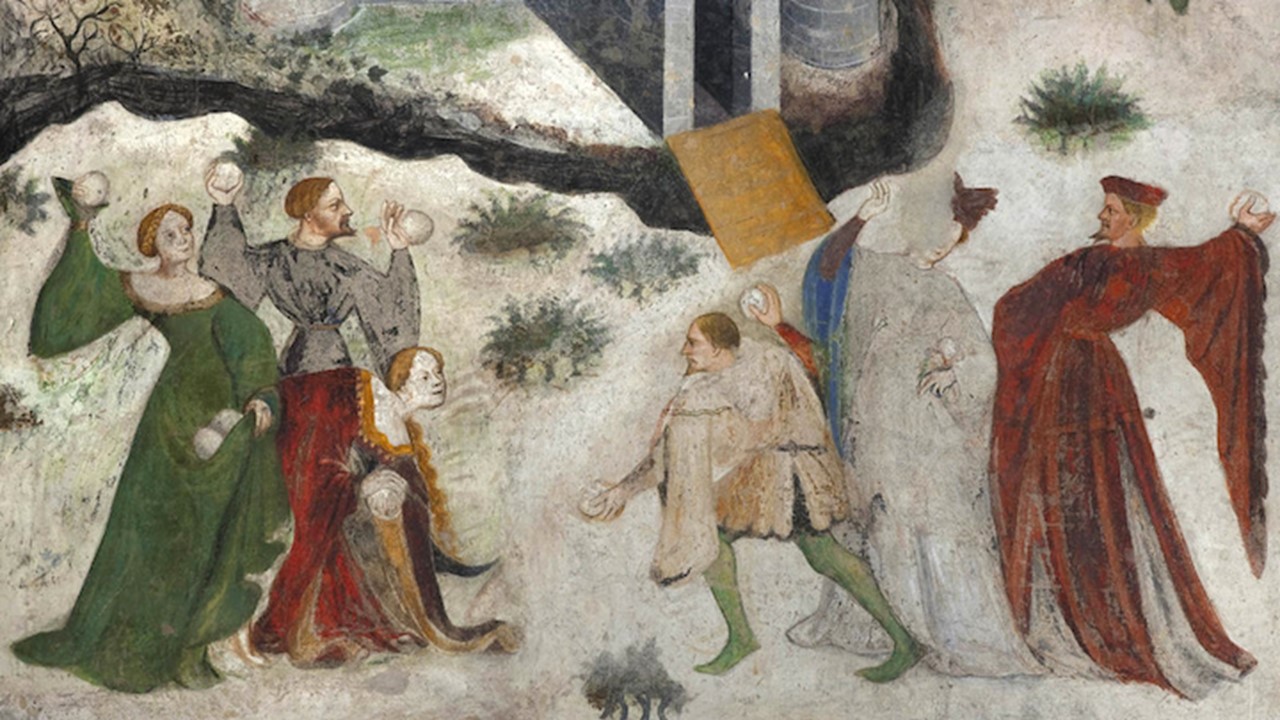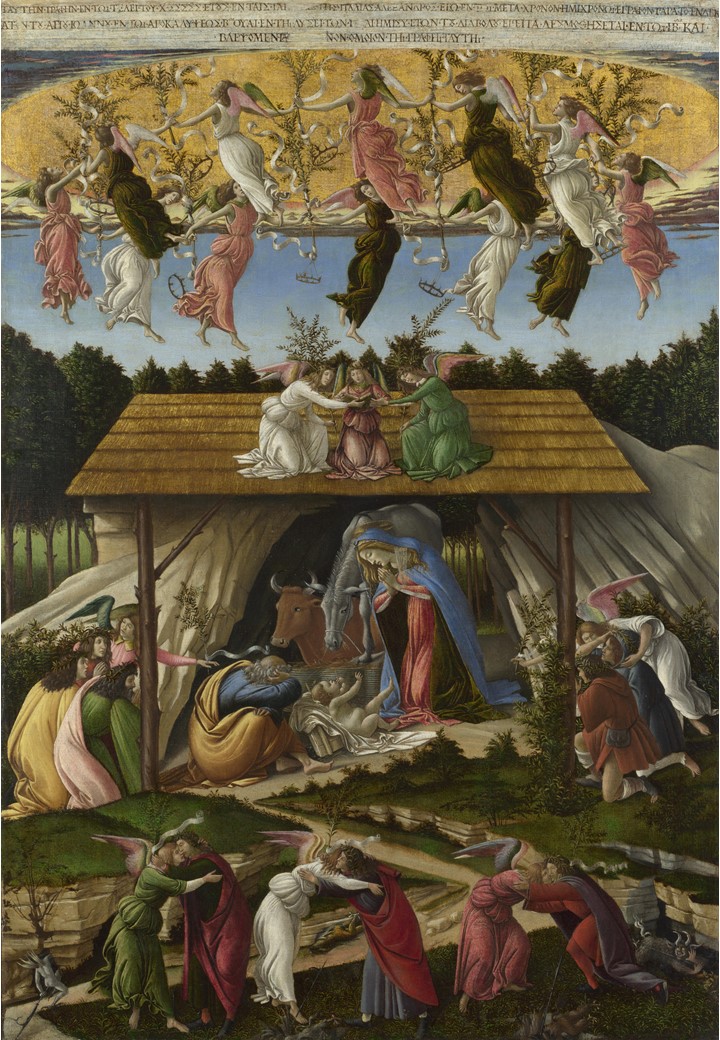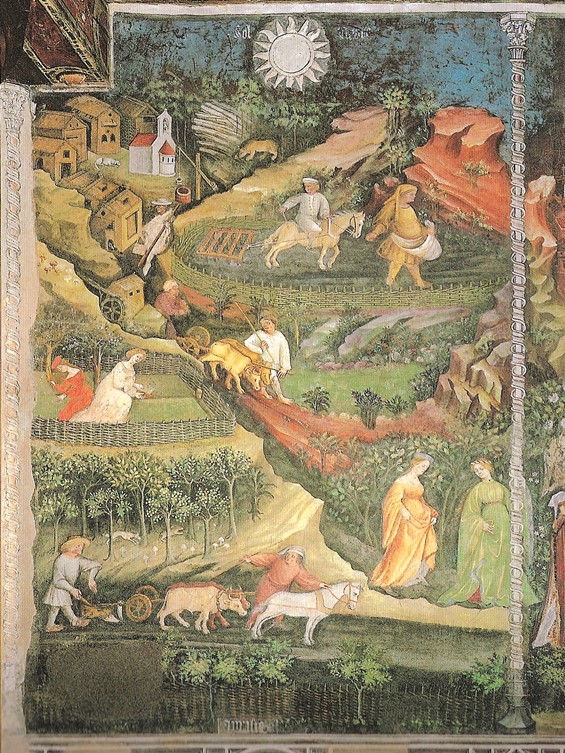
The Italian proverb “Aprile dolce dormire” certainly does not suit the fourth scene of the calendar of the Cycle of Months of Torre Aquila in Trento. Here, under the great April sun, one does not sleep, nor is one idle, but it is all a fervour of activity. http://senzadedica.blogspot.com/2013/04/il-ciclo-dei-mesi-aprile.html
The Month of April fresco comes from Torre Aquila in the Castello del Buonconsiglio, in Trento, Italy. It is part of an amazing fresco Cycle of the Twelve Months painted on the walls of the tower’s 2nd-floor main room. It was commissioned by Prince-Bishop George of Liechtenstein, who wanted to show how well-governed his territories were and how his labourers thrived. The painter of these remarkable paintings, Master Wenceslas, understood well what he was asked to do, created the best 15th-century advertising brochure for Trento, and for the Month of April fashioned a dazzling spring scene, crowded with a well-dressed crowd who, in the lush local countryside, serenely performed their necessary everyday chores.
Master Wenceslas, a Bohemian painter active in Trento since 1397, creates a rich April scene, full of natural beauty and pastoral activities. Nature awakens and the citizens of Trento are busy. The farmers catch up with their activities and the Ladies of the Court and enjoy a stroll in the woods. The scene is rich, dense and joyful… inspired by real-life but immensely beautified. The commissioner of this fresco, Prince-Bishop George of Liechtenstein, wants to give the idea that his territories flourish under his good governance. and prudent guidance. The painter, Master Wenceslas, understood this very well, and created a verdant scene of dazzling colours, the winter greys have disappeared, crowded with well-dressed farmers and elegant ladies. https://it.wikipedia.org/wiki/Ciclo_dei_mesi
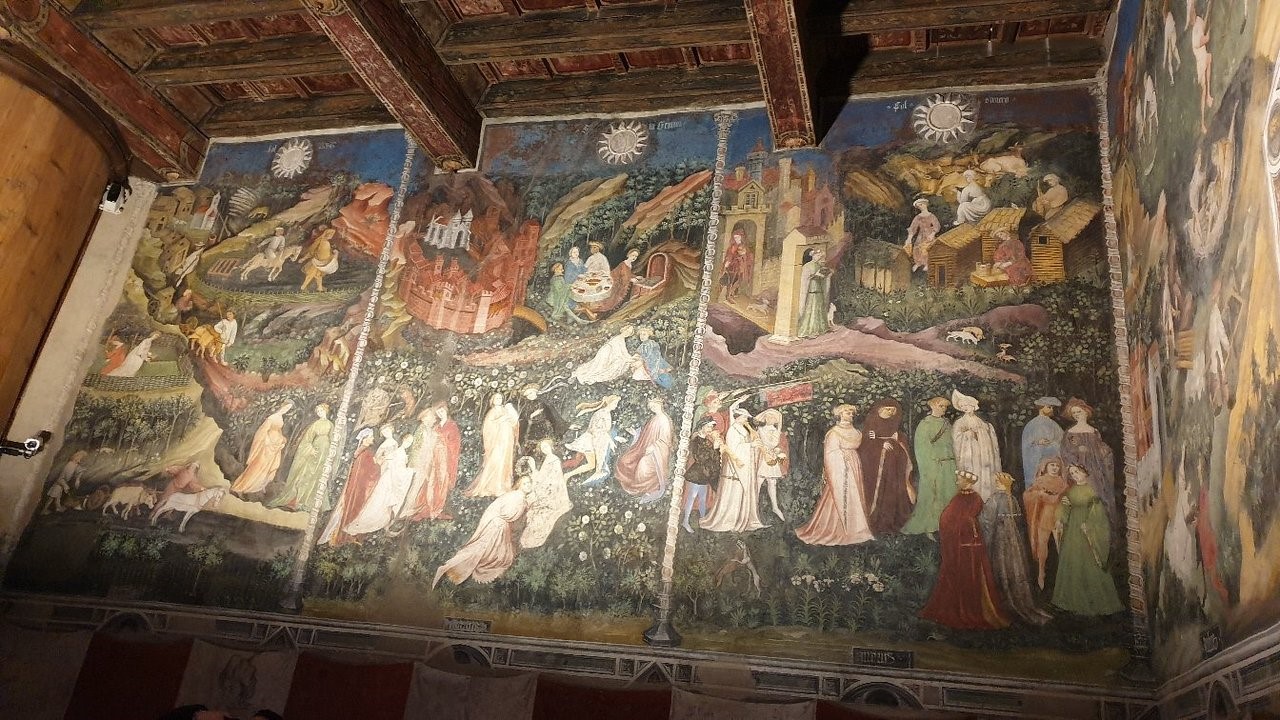
Wenceslas’s countryside is fertile and well organized. The fields are separated in an orderly manner and protected, like precious gardens, by braided willow fences. Everything is represented with such precision… the land, the buildings, the farmers’ chores. The April fresco looks as if it is the page of a textbook for a young farmer to study and learn! https://www.ilmiraggio.com/ciclo-dei-mesi-torre-aquila/
At the top of the composition, a lush fir forest offers refuge to one of those bears that populated the Alps at the time. Further down, a pilgrim, fully dressed in white with a hat and a cane, walks through a borough of thatched-roof houses arranged around a small church, empty of villagers… silent. Even the dogs in this village keep silent, as they are both dozing.
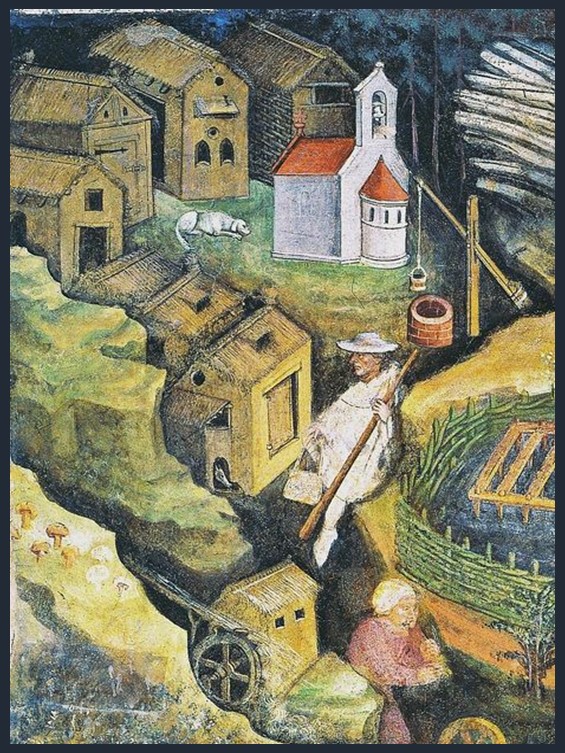
The farmers are busy with their pastoral duties. In a fenced and already ploughed field a farmer sows, while another farmer works the land with a harrow pulled by a horse. Further down to the left, two men, probably coming from a water-mill, carry sacks of flour on a cart driven by oxen. In the foreground, two other farmers plough the land with a heavy wheeled plough pulled by a pair of oxen and a horse. Women do not remain idle. Two of them, taking advantage of the beautiful weather, participate in the fervour of spring activities, gardening their well-fenced plot! Their precious land is on the border of a small forest where, among immense mushrooms, a dog chases a hare!
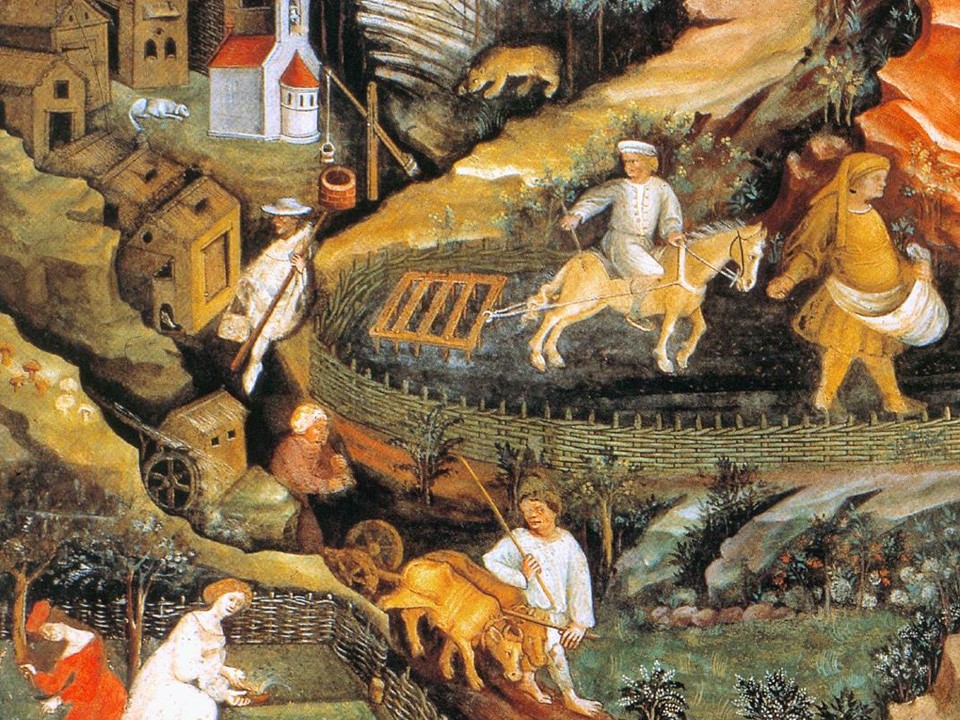
The month of April fresco is not only about hard work. The presence of two aristocratic young ladies, in the lower, right part of the composition, can not be missed. Depicted on the edge of the painted scene, the elegant ladies seem to walk towards the festive procession depicted in the following month of May. One of them, wearing an elegant green gown with long sleeves, crosses the thin, pillar-like, frame that divides the two months, and effortlessly, just as the succession of seasons is constant and uninterrupted, guides us to the next composition… that of May!
Until Next Month… check HERE! for a student Activity!
